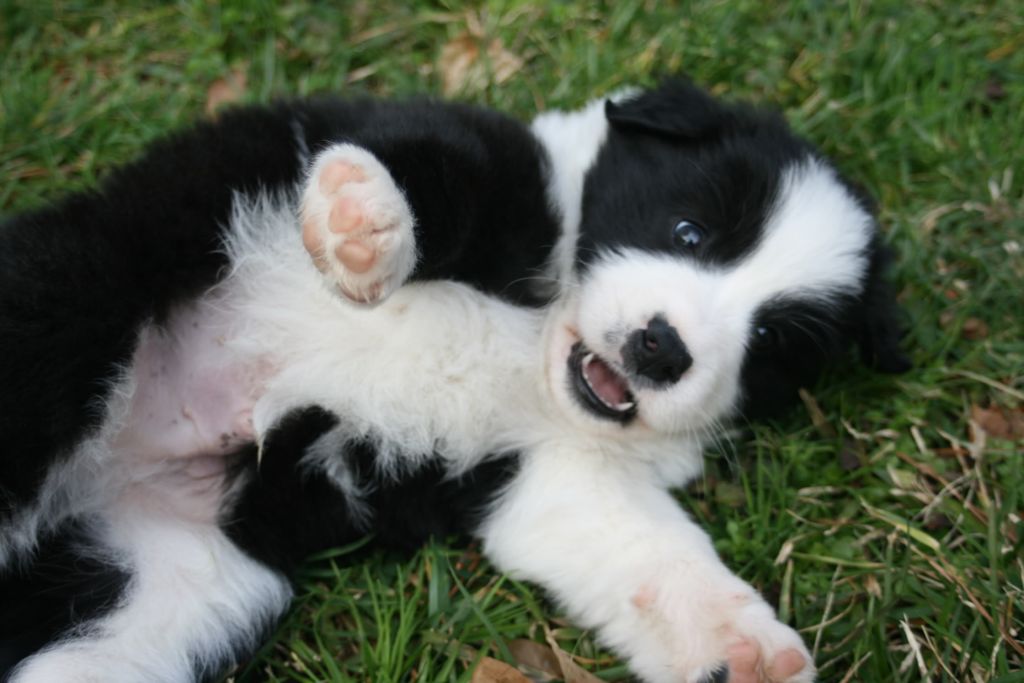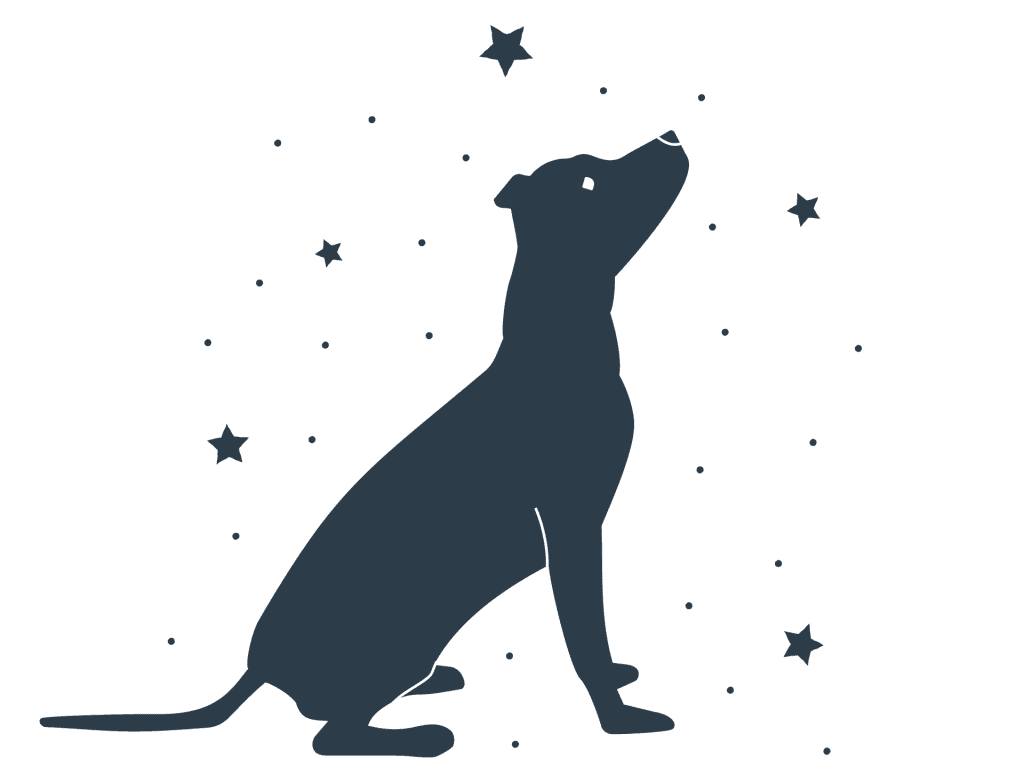Is reactivity the same as aggression?
Not exactly.
Reactivity and aggression are related but not interchangeable terms.
Reactivity typically describes an overreaction to a stimulus—like barking or lunging at another dog—often driven by fear, frustration, or over-arousal. Aggression, on the other hand, refers to a set of behaviors (like growling, snapping, or biting) used to increase distance from a perceived threat or to protect a valuable resource.
There’s no such thing as an “aggressive dog”—only dogs that sometimes use aggressive behaviors in response to certain situations. These behaviors have a purpose. For leash-reactive dogs, the goal is often to make the scary thing (like another dog or person) go away.
Can reactivity be cured?
Reactivity isn’t something that gets “cured” like a cold—it’s managed and improved through thoughtful training, lifestyle adjustments, and emotional support. Many dogs make tremendous progress, becoming calmer, more confident, and easier to handle. But expecting a dog to be perfect in all situations sets everyone up for frustration. Progress is success, even if the behavior never disappears completely.
Why is my dog only reactive on leash?
Because leashes change the rules.
When a dog is on a leash, they can’t move freely, create space, or avoid what worries them. This lack of control can make them feel more threatened. Off-leash, many dogs are far more relaxed and social, but on leash, they may bark, lunge, or growl out of frustration or fear.
What’s a trigger?
A trigger is anything that causes your dog to react—another dog, a person, a bike, a loud noise, etc. Each dog has their own set of triggers, and the intensity of their reaction can vary depending on distance, context, and how they’re feeling in the moment.
What’s “threshold” and why does it matter?
Your dog’s threshold is the point at which they go from noticing a trigger to reacting to it. Once your dog is over threshold, they’re no longer able to think, learn, or respond to cues—they’re just trying to survive the moment. Good training occurs under threshold, where your dog can remain calm, process the environment, and form new emotional associations.
Why does my dog react sometimes but not others?
Dogs, like humans, are affected by stress, sleep, illness, and past experiences. If your dog has had a tough day (e.g., loud noises, a vet visit, skipped naps), they may react more strongly than usual. When little stressors pile up and lower your dog’s coping ability, it’s called trigger stacking.
Is this my fault? Did I cause this?
No. Reactivity is incredibly common and has many contributing factors, including genetics, early socialization, past experiences, and environment. If you’re reading this, you clearly care about helping your dog, and that’s what matters most.You didn’t cause this, but you can help change the path forward.
Should I use an e-collar (also known as a shock collar) to stop my dog from barking, lunging, or growling?
No, and here’s why.
What you’re seeing is your dog communicating distress. Punishing that distress with tools like e-collars or leash pops can suppress the outward signs, but it doesn’t eliminate the feelings. In fact, it usually makes the underlying anxiety worse. Your dog may stop barking, but not because they feel better. They may shut down or become more unpredictable over time.
If you were afraid of spiders, and someone put one in your bed and shocked you every time you screamed, would that cure your fear? Likely not. You’d probably end up even more terrified… and maybe avoid your bed entirely.
Is my dog trying to protect me?
This behavior is typically rooted in self-preservation. You happen to be there, holding the leash. The good news is that we don’t have to know for sure in order to change the behavior.
Should I keep my reactive dog from playing with other dogs?
Not if they enjoy it!
If your dog plays well with other dogs in controlled, low-pressure environments, that’s great! Play can be a healthy, enriching, and beneficial activity for developing social skills. Ensure play is supervised, safe, and with suitable playmates. If your dog struggles in dog-dense areas like dog parks, that’s okay. Lots of dogs do! Playdates or structured group walks might be a better fit.
Am I just rewarding bad behavior with treats?
Nope. This is one of the most common myths in dog training.
You’re not rewarding barking or lunging. You’re teaching your dog that the presence of another dog (or person, or bike, etc.) means something good is about to happen. Over time, this alters how your dog perceives the trigger, which in turn influences their response, without relying on fear or punishment.
It’s not about tossing treats randomly. When you are training, every treat you deliver reinforces a microbehavior such as looking at the trigger calmly, checking in with you, staying still, or simply not reacting. The more treats you’re handing out, the more good choices your dog is making.
See the dog → Mark → Treat happens = Good feelings about dogs.
Microbehavior in the presence of a trigger → Mark → Treat happens = Good feelings about dogs.
Not: Bark → Treat = Bribing bad behavior.
If your dog is already barking or lunging, you’re too close. Take a few steps back and work at a distance where your dog can stay well under their threshold and actually learn. That’s the sweet spot where real progress happens.
Any pro tips for us humans?
Absolutely! I’ve got a ton! But here are three of my favorites:
- Quit while you’re ahead.
If things are going well, stop there. Progress can vanish fast if you push too far. Thresholds, surprise triggers, and good old Murphy’s Law tend to show up the moment you get overconfident. End on a high note before things go sideways. - Training is a human skill, too.
Learning when to mark and treat, getting your timing right, handling the leash, knowing when to move or stay put—it’s a lot! Be patient with yourself. Practice in your house first, where the stakes are low and both you and your dog can build skills without pressure. - It takes as long as it takes.
Progress depends on many factors: your dog’s learning history, your consistency, how often you practice, and how solid your own skills are. The more you both practice in a good state for learning, the better the outcome. Sometimes, success is all about resetting expectations. I can help you make sense of the process and map out a realistic, customized path forward for you and your dog.
Ready to Train Smarter (Not Harder)?
Dog training with Good Human Dog Training gives you more than just a polite pup; it gives you peace of mind. Whether you’re wrangling a wild puppy, managing reactivity, or just tired of being dragged down the block, we’ve got a plan for you.
Let’s make training click for both of you.
Schedule Services


